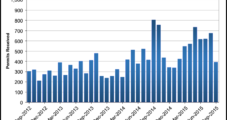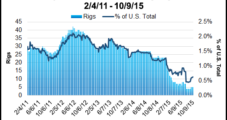Following last month’s milestone decision to keep the beleaguered greater sage grouse off the endangered species listing, federal agencies in Utah have temporarily closed more than 233,000 acres of public and national forest lands for up to two years while they determine if the lands’ importance to the ground-based bird habitat is such that they should be made off limits for a longer period.
Tag / Endangered
SubscribeEndangered
Articles from Endangered

Western Governors to Explore ESA Reform, Says Wyoming’s Mead
In the wake of the milestone decision by federal officials to not list the greater sage grouse as endangered or threatened, Wyoming Gov. Matt Mead late Tuesday said he intends to pursue a regional initiative to reform the Endangered Species Act (ESA) as incoming Western Governors’ Association (WGA) chairman.
Sage Grouse Debate Comes Home to Roost in Senate Committee
Lawmakers on the U.S. Senate Committee on Environment & Public Works debated with regulators and each other over the best way to protect the sage grouse, and to possibly avoid listing the bird on the federal Endangered Species Act.
Sage Grouse Debate Comes Home to Roost in Senate Committee
Lawmakers on the U.S. Senate Committee on Environment & Public Works debated with regulators and each other over the best way to protect the sage grouse, and to possibly avoid listing the bird on the federal Endangered Species Act (ESA).
NatGas/Oil Wells Put Colorado’s White River on ‘Most Endangered’ List
Drilling for natural gas and oil in northern Colorado has American Rivers calling the state’s White River one of the most endangered rivers in the United States.
Proposed Pennsylvania Endangered Species Bills Threaten Fed Funding
Proposed Pennsylvania legislation would make it more difficult to list and protect endangered species in the state, while making it potentially easier to site wells in the Marcellus Shale, but it also could force the “taking” of more than $27 million a year in federal funding for state fish and game commissions, according to officials.
Private Pennsylvania DCNR Meeting to Discuss Forest Drilling
The Pennsylvania Department of Conservation and Natural Resources (DCNR) plans to hold an invitation-only meeting on Thursday to discuss a request by two energy companies to access their mineral rights under the Loyalsock State Forest.
Industry Briefs
The Independent Petroleum Association of America (IPAA) has requested a public forum with the U.S. Fish and Wildlife Service (FWS) on the agency’s plans regarding the Endangered Species Act (ESA) because members are concerned that new listings could harm domestic oil and natural gas exploration and production. In a letter to FWS Director Daniel Ashe, IPAA CEO Barry Russell said members understand that the agency is obligated to meet certain deadlines under a court-approved settlement with the Center for Biological Diversity and Wild Earth Guardians. However, there has been “little transparency afforded to the public on which species are coming up for review,” Russell said. “The pure depth and breadth of these settlement agreements could harm our membership and create uncertainty in the development of domestic oil and natural gas.” By 2016 FWS is required to complete a review of 250 candidate species for final listing on the ESA and is required to complete other actions on listings and critical habitat petitions of more than 1,000 species.
Gas Drilling Threatens Susquehanna River, Says Report
American Rivers, which publishes an annual list of the “most endangered rivers” in the country, said Tuesday the dangers to water resources from natural gas drilling have lifted the Susquehanna River to the top of its 2011 compilation.
Industry Brief
Wyoming Gov. Dave Freudenthal said a federal Endangered Species Act listing for the sage grouse would impact 83% of the gas production, 64% of the oil production and 80% of the coal production in his state. Speaking at a state wind energy symposium earlier this month, Freudenthal said he expected energy developers to prevent the economic harm he sees befalling Wyoming if the sage grouse is placed under the Act, according to a report on the symposium. Different viewpoints were expressed by other speakers at the symposium. Erik Molvar, director of the Biodiversity Conservation Alliance, said the wind industry faces restrictions related to the sage grouse, but the gas, oil and coal industries do not. Aaron Clark, a rancher and energy advisor to the governor, said the sage grouse core areas negotiated between the state and fossil fuel industries would cause little disruption of those industries. Clark said protecting the grouse within core areas would impact only about 4% of the coal industry and 2% of natural gas lands.





